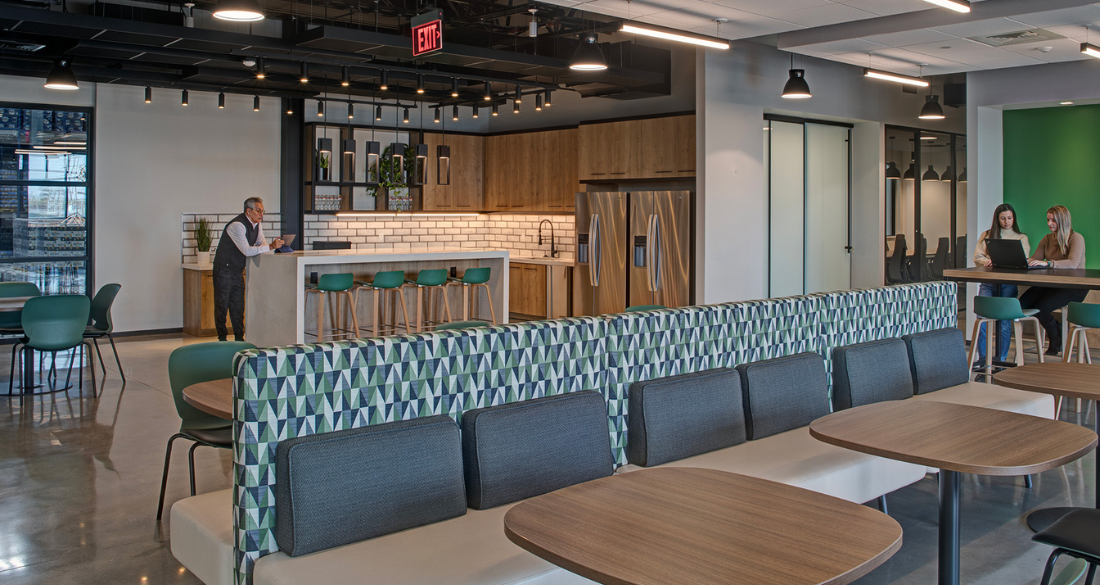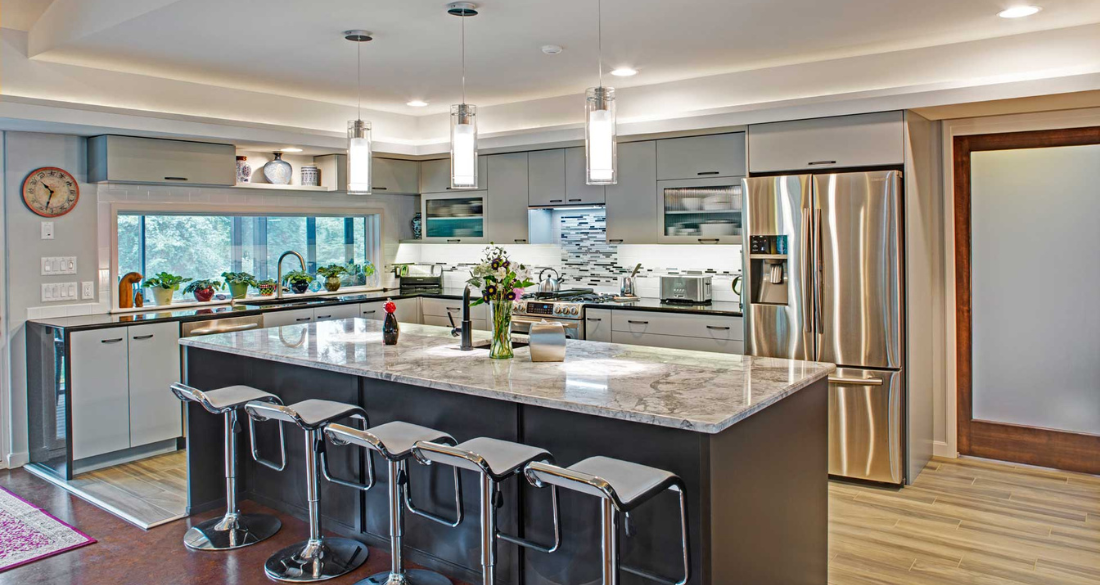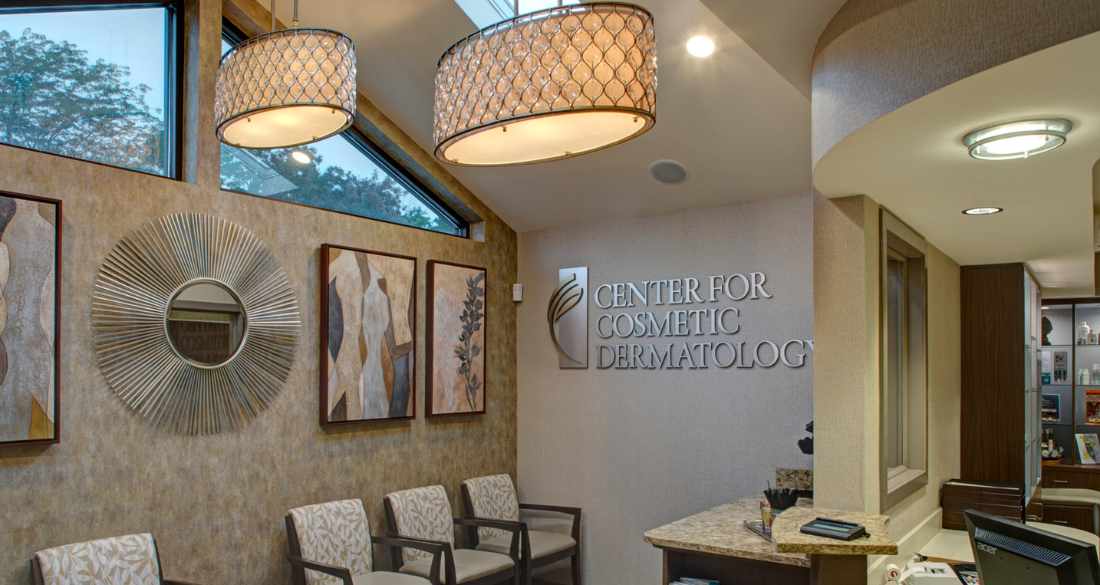The industrial design landscape is continuously changing, and so are tenant demands. Since the global pandemic, there has been an increased prioritization of developing smart, adaptable industrial spaces that support environmental sustainability, accommodate occupants’ changing needs, and optimize efficiency.
Flexible industrial design is a concept that refers to a facility’s ability to adapt to evolving circumstances and needs, including climate change, urbanization, and socio-economic shifts. This not only future-proofs structures but improves their functionality and relevancy.
Industrial designers must shift their focus toward the future and integrate adaptability and resilience into their strategies to maximize productivity, sustainability, and cost-effectiveness.
Understanding the Key Benefits of Adaptable Industrial Design
Flexibility is the core of adaptable architecture. Rather than being static, industrial facilities are intentionally designed to evolve with and accommodate a diverse range of tenants and uses. By moving away from fixed floorplans and functions, industrial designers empower end-users by supporting their changing needs.
This opens the door to numerous benefits, including:
- Longevity: A structure that can evolve with demands and preferences will be used by occupants for longer, ensuring it stands the test of time.
- Cost-effectiveness: Adaptive reuse boosts cost-effectiveness, allowing designers to repurpose existing facilities and materials. This is more affordable than starting from scratch and designing and building a new structure.
- Operational efficiency and productivity: A structure that better accommodates occupants’ needs drives productivity by eliminating operational workarounds.
- Enhanced sustainability: Demolishing old facilities to build new ones creates more waste, carbon emissions, and material usage. Adaptive reuse supports sustainability initiatives by conserving resources and energy.
3 Design Strategies for Flexible and Adaptable Industrial Spaces
To reap these rewards and future-proof facilities, designers must adopt three core strategies when developing adaptable industrial spaces, including:
1. Open Floor Plans and Modular Layouts
Instead of rigid layouts and floor plans, modular industrial architecture consists of multi-functional spaces and movable components. This allows tenants to customize an industrial facility to their precise and evolving needs.
Modular layouts allow a structure’s various components to be easily disassembled, assembled, and reconfigured as needed. This approach can be seen in shipping container homes, where units can be combined and stacked to create dynamic living spaces that cater to the residents’ unique needs and preferences.
Additionally, open floor plans give occupants the flexibility and versatility to customize their workspaces to support their activities best.
2. Flexible Infrastructure and Services
Industrial designers must ensure a facility’s infrastructure is highly flexible, allowing the building to adapt to high-impact, low-probability events like the global pandemic, which can drive higher profitability over time.
Additionally, designers must consider the services a structure provides, such as incorporating extra space into a building’s layout to house more equipment during busier manufacturing and distribution periods. Furthermore, tilt-up concrete panel designs can incorporate “knock out” panels, enabling the existing structure to easily connect to future additions, enhancing flexibility and scalability.
3. Sustainable and Material Resilience
Using resilient and sustainable materials to build industrial facilities is essential to a structure’s environmental impact. Incorporating these materials can reduce a facility’s carbon footprint and mitigate damages caused by extreme weather conditions.
Some of the best sustainable and resilient materials to use for industrial facilities are:
- Tilt-up Concrete Panels: Offering durability, versatility, and cost-effectiveness for industrial facilities, tilt-up concrete panels are made from resilient materials and can be customized to meet specific design requirements.
- Solar Panels: Large warehouses, manufacturing, and self-storage facilities are using solar panels on expansive roofs or canopy structures to offset utility bills or feedback to the grid.
- Recycled steel: Using recycled materials reduces a structure’s carbon footprint and environmental impact.
- Green roofing: Industrial designers can use vegetation on a building’s roof to improve air quality, eliminate water runoff, and provide natural insulation.
Case Study in Flexible Industrial Design
SAAarchitects has deep expertise in adaptive industrial designs. One of our standout projects is a 311,200-square-foot corporate office and distribution center we designed for Wilsbach Distributors in Harrisburg, Pennsylvania.
The corporate office features open work areas, huddle meeting spaces, a 50-person corporate training center, a graphics production area, a fitness center, an outdoor patio, and a roof deck for client product launch showcases. The 285,000-square-foot warehouse is crafted from a pre-engineered metal building structure.

Future-Proofing Industrial Structures
Adaptable architecture ensures an industrial facility is ready for the future and beyond. Not only does flexible design better accommodate the needs of tenants, but it also promotes sustainability, durability, and profitability.
SAAarchitects experience and personalized approach can help boost the functionality and flexibility of your facility. Contact us today for more information.


